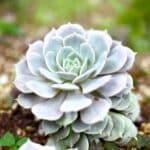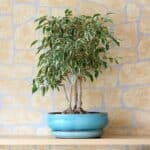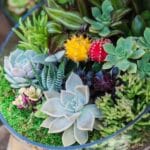Anthurium Warocqueanum is one of the most gorgeous anthurium species, which is why so many plant enthusiasts like adding it to their indoor collections.
Not only is it beautiful, but it is also a rapid-growing plant. It first originated from the jungles of Columbia before being circulated to other parts of the world.
However, unlike several other anthurium varieties, the anthurium warocqueanum requires a little more attention and care.
For instance, it demands regular watering, fertilization, adequate soil, the right temperature and humidity levels, and bright, indirect light conditions. All these will help it deliver its best and live up to the hype.
This anthurium warocqueanum care and growing guide will enable you to learn how best to grow and care for this houseplant.
Table of Contents
What is Anthurium Warocqueanum? | Anthurium Warocqueanum Origin
| Common Name | Queen Anthurium |
| Botanical Name | Anthurium Warocqueanum |
| Plant Type | Epiphytic, Perennial |
| Family | Araceae |
| Sun Exposure | Bright, Indirect Light |
| Mature Size | Up to 6ft tall |
| Soil Type | Loose, airy, well-draining soil |
| Leaf Color | Dark Green |
| Native Area | Native to Columbia |
| Temperature | Between 60ºF to 85ºF |
| Toxicity | Toxic to both humans and animals |
| Cool Hardiness | Zones 10 & 11 |
Commonly known as Queen Anthurium, the anthurium warocqueanum is an epiphytic perennial plant part of the Araceae family.
Originated from the tropical rainforest of central and western Colombia, the plant was first classified under the anthurium species in the 19th century by Thomas Moore in a horticulture magazine known as Florist & Pomologist.
The warocqueanum is a species that can grow quite big in its natural habitat, the rainforest zone. Yet, indoors it can produce leaves that grow up to one meter long. The plant is referred to as queen anthurium because of its beautiful foliage and attractive feel it brings to your home.
It features amazing dark green leaves with a thick and leathery feel coupled with a silver-colored venation that gets more noticeable with the plant’s maturity.
Meanwhile, its foliage can grow up to 6ft tall, while its leaves can grow to a height of 2 meters. Its leaves are elongated and droplet-shaped.
As mentioned earlier, the queen anthurium is quite an attractive and rapid-growing plant. The major point of emphasis is its gorgeous foliage and long, dark green velvety leaf blades, which can do well indoors and outdoors during the summer, especially under humid climates.
Even though it likes growing on top of other plants, it will thrive in a pot or hanging basket around your home.
Is Anthurium Warocqueanum Easy To Care For?
Despite how attractive the anthurium warocqueanum is, caring for it is quite trickier than most other houseplants. However, it doesn’t, in any way, stop you from adding it to your attractive collections.
All that is required of you is to know the basic care tips, especially regarding lighting, water, fertilizing, and soil requirements, and you’re good to go.
Anthurium Warocqueanum Care and Growing Tips
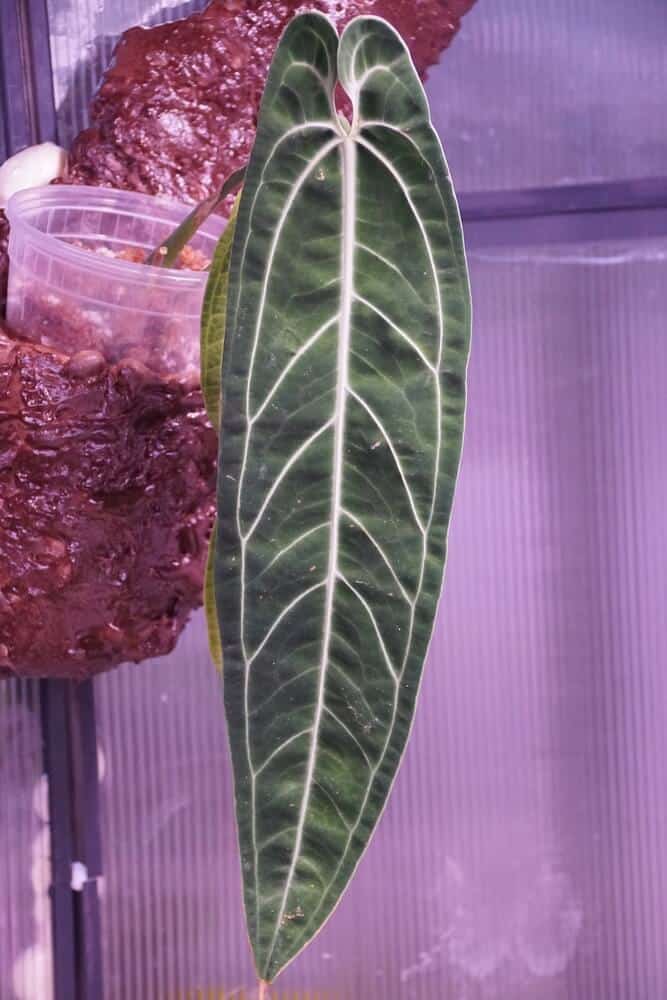
Natural Habitat & Light Requirements
In its natural habitat, the anthurium warocqueanum grows towards the sun yet is never exposed to it directly.
In other words, if you want to get the best out of your queen anthurium, you must ensure that you imitate its natural jungle condition by keeping it away from the direct effect of sunlight.
It prefers optimal light conditions, which is bright, indirect sunlight. If it is allowed exposure to direct sunlight, it will hit the foliage directly and cause the leaves to burn, which will bring about the black or dark brown spots on your plant's leaves.
Watering Requirements
The trickiest and most challenging aspect of the anthurium warocqueanum care is watering. Since the queen anthurium has its origin from the tropical rainforest, it should certainly do best under moist and humid conditions.
But, that doesn’t mean you should overwater it, as even a little more than its required amount can be disastrous.
Once you’ve potted it in moss, you can only water it at least once a week to allow the plant to completely absorb the moisture in the moss. However, you must ensure that the plant does not fully dry out or get too soggy for a long time, to avoid causing root rot.
Humidity & Temperature
The anthurium warocqueanum thrives in temperatures of 25ºC to 32ºC during the day and 21ºC to 24ºC during the night.
Anything higher than that will cause the foliage and flowers to burn out and finally result in the wearing out of the plant. Again, anything below 16ºC will damage the plant. Anything above 32ºC is trouble for the plant.
Humidity-wise, the plant thrives in a well-humidified environment in its natural habitat. Therefore, to imitate that, you must ensure it stays under humidity levels of 60% to 70%.
You can also utilize a humidifier or provide a water-filled pebble tree and place it under the pot. Regular misting is also a good option. Don’t allow its humidity levels to drop too significantly.
Soil Requirements
In its natural habitat, it’s hard to see the queen anthurium growing on the ground in the soil. It is epiphytic; therefore is often seen growing in leaf litter or on trees or other plants. In other words, the plant’s roots are often exposed in the jungle, thus allowing it to gain some nutrients from its host plant.
So, if you’re growing indoors, you must imitate its outdoor conditions by using very light or loose potting soil. Also, avoid waterlogged soil, ensuring that the mix has a well-drainage system.
We recommend an aroid or orchid mix with a mixture of organic matter. The anthurium warocqueanum enjoys sphagnum moss, peat moss, and bark.
Fertilizing Needs
Queen anthuriums don’t like too many nutrients. Therefore, if you want to feed them, it should be done weekly but slightly using a liquid fertilizer with ¼ strength all year long.
The warocqueanum is an epiphytic plant; therefore, it benefits from small nutrients found in the debris of tree branches like rotten leaves and matters from the wind and rain.
However, most professional gardeners would recommend feeding it often, say once a week yearly. You can use a quarter of the recommended strength; for instance, liquid fertilizer is enough.
Planting (Potting & Repotting)
In its tropical jungle, the anthurium warocqueanum grows primarily on trees. Therefore, you must take note of this when planning a proper potting system for its growth.
Having said that, the ideal pot for the queen anthurium should be made of wood to allow the roots to attach to it just the way it does by attaching to a tree in the wild.
Another good alternative is to use a pot that is made of clay. But don’t forget to make sure that the clay pot features good drainage holes, as it will prevent your plant from suffering from waterlogging, thereby leading to root rot.
How to Prune Anthurium Warocqueanum
There are one of two reasons why many plants require pruning. It’s either you are pruning them to stop them from becoming too long, huge, or unruly, or you are doing so to keep them healthy.
As long as the anthurium warocqueanum is concerned, the primary reason for its pruning is to maintain the plant’s healthy state.
Queen anthuriums don’t grow many leaves, and the few leaves they grow are mostly kept for their beauty sake. However, no matter how huge and thick their leaves appear, they can easily be destroyed, be it from the to and fro movement, shipping, or people accidentally bashing on them.
Again, the plant is prone to disease. The huge upper area of the leaves creates enough dwelling place for moisture over long periods, thereby making them prone to bacterial issues.
Therefore, you’ve to prune the affected leaves, and by so doing, you’re removing the eyesore parts and paving the way for fresh new growth.
Anthurium Warocqueanum Propagation
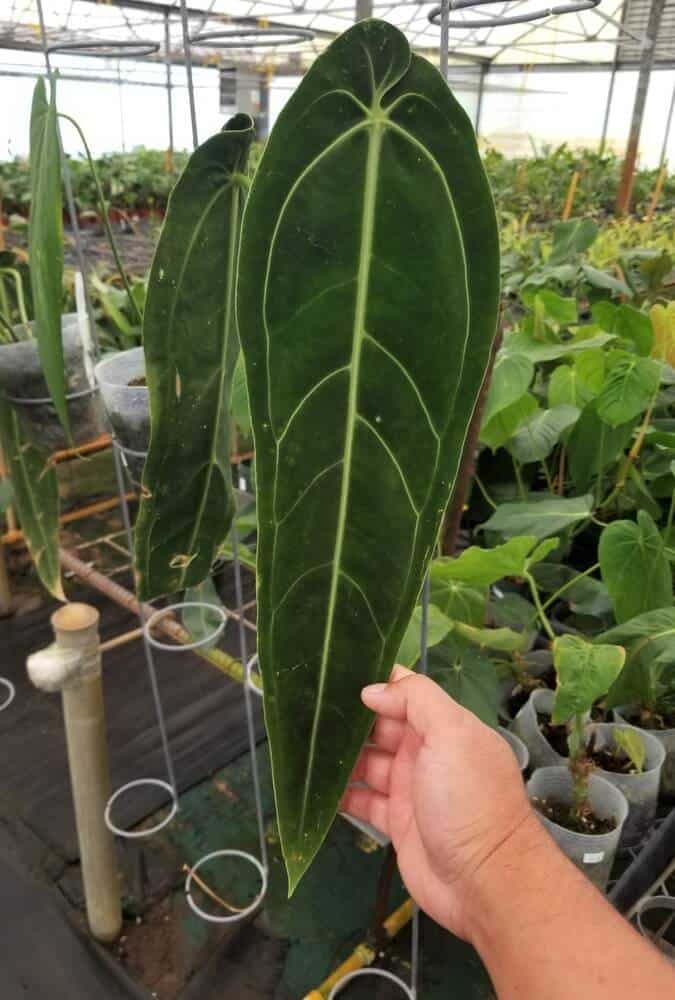
There are several ways of propagating the anthurium warocqueanum. But, the best method is propagation by stem cutting.
Since the queen anthurium doesn’t form flowers with petals but rather forms flowers or spadix that develops from a bract, it is ideal to propagate it through the stem cutting method.
This can be done by taking a cutting from a fresh shoot out of the original stem. Then, separate the fresh shoot from the original plant and grow it as a new plant, but make sure you don’t cut any fresh growth too early because it can be very harmful to the plant.
Anthurium Warocqueanum Varieties
Apart from the anthurium warocqueanum, we have some other varieties that are also seen as royal plants in the family, which also possess unique and attractive foliage. Some of these queen anthurium varieties include;
- Anthurium Queen of Hearts
- Anthurium Red Queen
- Anthurium Black Queen
- Anthurium Pink Queen from Rare plants AU
Frequently Asked Questions
Why is my Anthurium Warocqueanum Dying?
There are several causes to a damaged queen anthurium. It could either be due to that overwatering or insufficient watering. It could be also be caused by pest infestation, or you’re not using the right substrate.
Whichever it is, the best way to know the actual cause is by studying the foliage to enable the leaves to indicate where the fault is coming from.
Why Does My Plant Loose Leaves?
Whenever your anthurium queen starts losing its leaves, it means that you’re not giving it the attention it deserves. However, it is normal for the plant to shed leaves and keep just a few of its leaves if given suboptimal conditions regarding humidity, watering, temperature, substrate, and fertilizer.
Why Are the Leaves on My Anthurium Warocqueanum Turning Yellow?
If your anthurium queen is turning yellow, it could result from overwatering or underwatering. It could also be that it is lacking in nutrients. If you want to get the actual cause of the problem, you’ve to rule out the possibilities of all other causes and make some adjustments to the care.
What Kind of Pot is Ideal for My Anthurium Warocqueanum?
Since the anthurium queen prefers to have sufficient air exchange and get hydration at all times, you should make sure that when choosing its pot, it should be geared towards making the above possible.
In other words, the right pot for this plant is a wooden basket or a terracotta pot, as the ceramic pot often retains excess water, even with drainage holes.
Is It Right to Mist My Anthurium Warocqueanum?
Since the queen anthurium thrives under high humidity levels of at least 70%, it is good to mist it every day as long as you provide it with enough airflow that can quickly dry out the leaves. Misting without sufficient airflow will cause bacterial leaf spots to form on the foliage.
Related Posts:
- Anthurium Crystallinum Vs Clarinervium: Key Differences
- Anthurium Clarinervium Care and Growing Tips
- Anthurium Vittarifolium Care and Growing Tips

